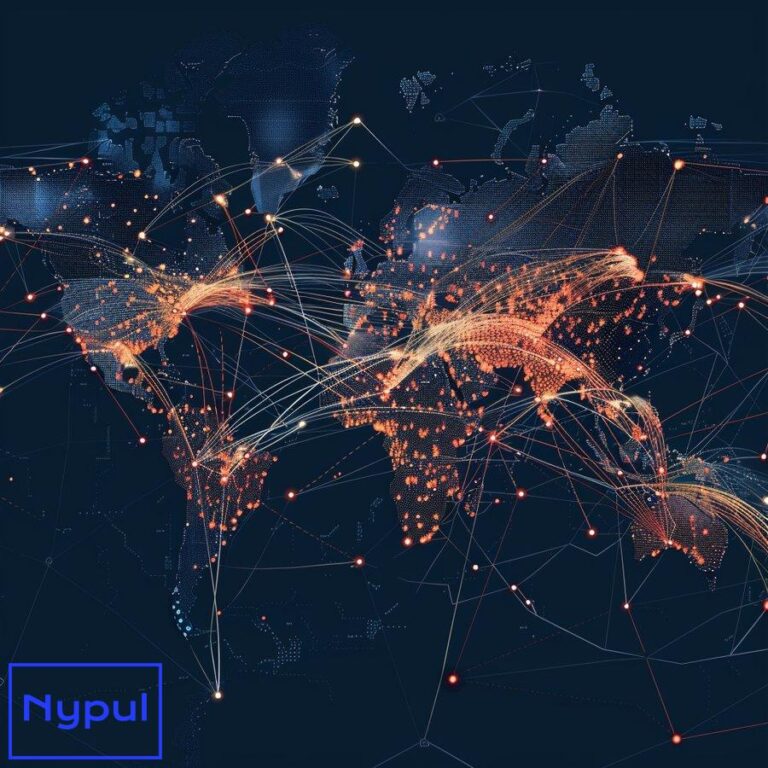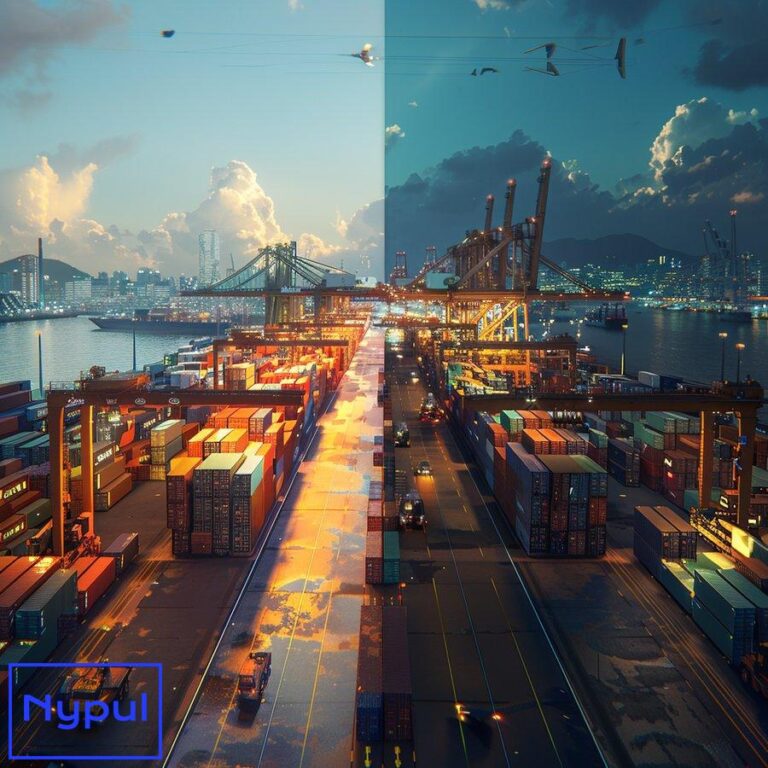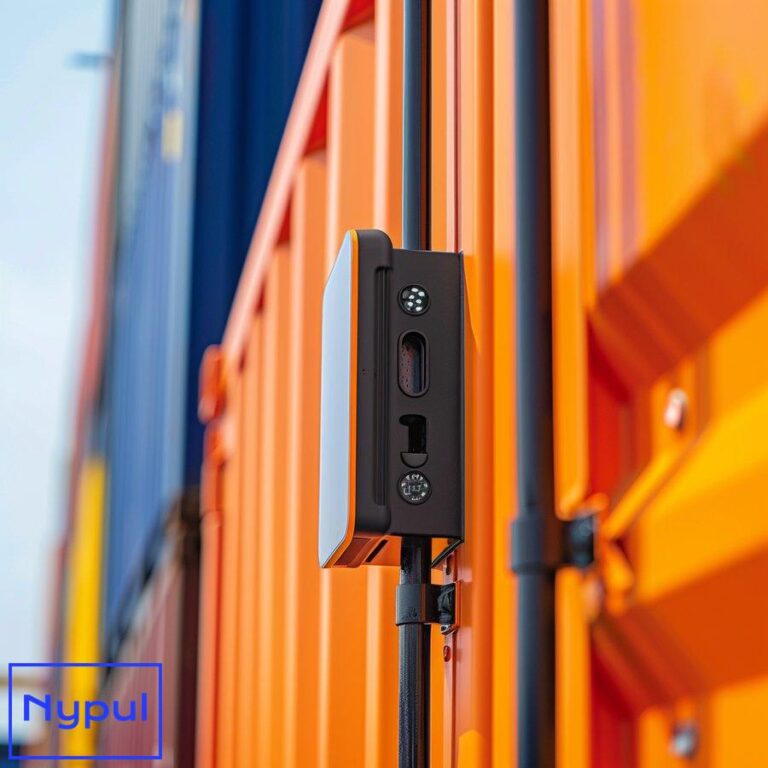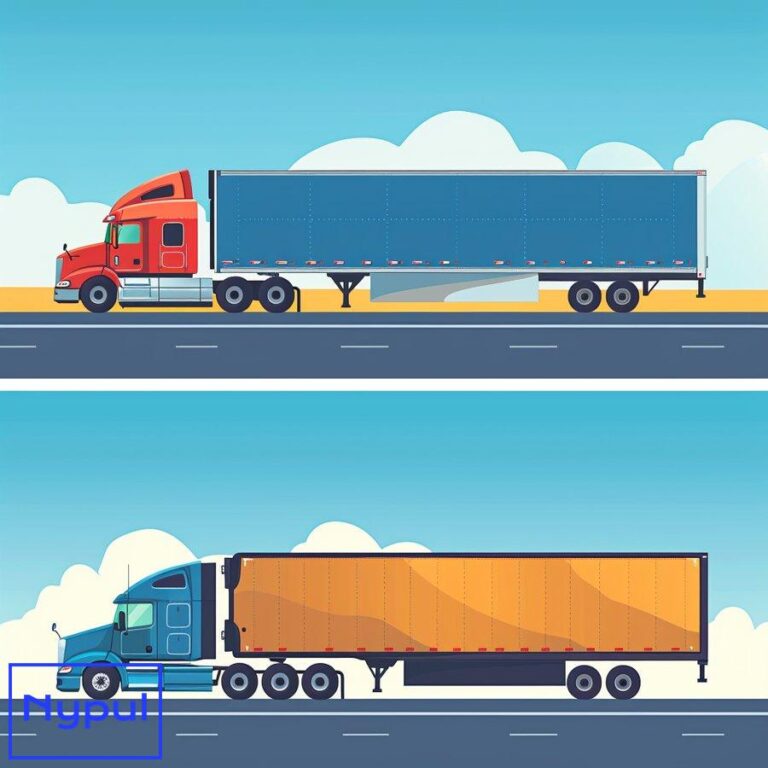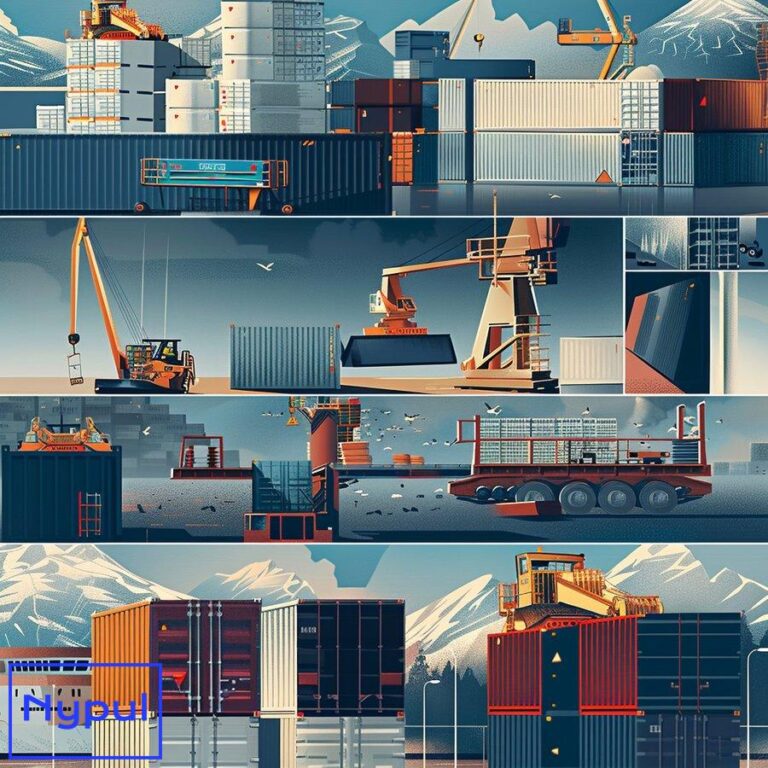How Big Is the Drayage Market in the US
What is the current size and value of the US drayage market?

The drayage industry plays a vital role in the US transportation sector, facilitating the movement of goods over short distances, typically between ports, rail terminals, and inland distribution centers. As of 2024, the US drayage market is estimated to handle approximately 60 million movements annually, with a total value exceeding $50 billion.

To put the size of the drayage market into perspective, consider the Port of Los Angeles, the busiest container port in the United States. In 2023, the port handled over 10 million twenty-foot equivalent units (TEUs) of containerized cargo. Each of these containers requires drayage services to transport it from the port to its next destination, whether it be a nearby warehouse or a rail terminal for further inland transportation.
The table below illustrates the volume of containerized cargo handled by the top five US ports in 2023:
| Port | TEUs Handled (2023) |
|---|---|
| Port of Los Angeles | 10.7 million |
| Port of Long Beach | 9.1 million |
| Port of New York and New Jersey | 8.8 million |
| Port of Savannah | 5.8 million |
| Port of Seattle-Tacoma | 3.7 million |
The substantial cargo volumes at these ports underscore the critical role that drayage services play in keeping the US supply chain moving efficiently. With millions of containers requiring transportation each year, the drayage industry has become an indispensable component of the nation’s logistics network.
How has the US drayage market grown in recent years?

The US drayage market has experienced significant growth in recent years, driven by several factors, including the expansion of e-commerce, increased global trade, and the need for more efficient supply chain solutions. Between 2018 and 2023, the market grew at a compound annual growth rate (CAGR) of 4.2%, reaching a value of $48.5 billion in 2023.

E-commerce Boom
The rapid growth of e-commerce has been a major contributor to the expansion of the drayage market. As online shopping continues to gain popularity, the demand for efficient transportation of goods from ports to distribution centers has skyrocketed. In 2023, e-commerce sales in the US reached $1.1 trillion, accounting for 17.2% of total retail sales. This surge in online shopping has put pressure on the drayage industry to keep pace with the increasing volume of goods moving through the supply chain.
Global Trade Growth
The growth of global trade has also played a significant role in the expansion of the US drayage market. As the world becomes more interconnected, the volume of goods being shipped internationally has increased substantially. In 2023, the value of US imports reached $3.2 trillion, while exports totaled $2.1 trillion. This growth in international trade has led to a corresponding increase in the demand for drayage services to transport goods from ports to inland destinations.
Efficiency Improvements
The need for more efficient supply chain solutions has also contributed to the growth of the drayage market. As businesses seek to optimize their logistics operations, they have increasingly turned to drayage providers to streamline the movement of goods. By leveraging advanced technologies, such as transportation management systems and real-time tracking, drayage companies have been able to improve efficiency and reduce costs for their clients.
The table below illustrates the growth of the US drayage market between 2018 and 2023:
| Year | Market Value (USD Billion) | Growth Rate |
|---|---|---|
| 2018 | $40.2 | – |
| 2019 | $41.9 | 4.2% |
| 2020 | $43.7 | 4.3% |
| 2021 | $45.5 | 4.1% |
| 2022 | $47.4 | 4.2% |
| 2023 | $48.5 | 2.3% |
The consistent growth of the drayage market over this period demonstrates its resilience and adaptability in the face of changing market conditions and consumer demands.
What are the key drivers fueling the growth of the US drayage market?
Several key drivers have contributed to the growth of the US drayage market, including the rise of e-commerce, the expansion of global trade, and the increasing demand for efficient supply chain solutions.

The E-commerce Revolution
The explosive growth of e-commerce has been a significant driver of the drayage market’s expansion. As more consumers embrace online shopping, the demand for efficient transportation of goods from ports to distribution centers has surged. E-commerce giants like Amazon, Walmart, and Target rely heavily on drayage services to ensure that their products reach customers quickly and reliably.
Seaborne Trade Expansion
The growth of seaborne trade has also played a crucial role in fueling the drayage market’s growth. As global trade volumes continue to increase, the demand for drayage services to transport goods from ports to inland destinations has risen accordingly. In 2023, seaborne trade accounted for approximately 80% of global trade by volume and 70% by value. This growth in maritime trade has directly impacted the drayage industry, as more containers require transportation from ports to their next destination.
Supply Chain Optimization
The increasing demand for efficient supply chain solutions has also contributed to the growth of the drayage market. As businesses seek to streamline their logistics operations and reduce costs, they have increasingly turned to drayage providers to optimize the movement of goods. By leveraging advanced technologies and data analytics, drayage companies have been able to improve efficiency, reduce transit times, and enhance visibility throughout the supply chain.
Infrastructure Investments
Investments in port and transportation infrastructure have also played a role in supporting the growth of the drayage market. As ports expand their capacity and improve their facilities, they can handle larger volumes of cargo more efficiently. Additionally, investments in road and rail infrastructure have helped to reduce congestion and improve the flow of goods throughout the supply chain.
The table below summarizes the key drivers fueling the growth of the US drayage market:
| Driver | Impact on Drayage Market |
|---|---|
| E-commerce Growth | Increased demand for efficient transportation of goods from ports to distribution centers |
| Seaborne Trade Expansion | Higher volumes of containerized cargo requiring drayage services |
| Supply Chain Optimization | Growing demand for streamlined logistics solutions and cost reduction |
| Infrastructure Investments | Improved port capacity and transportation networks supporting drayage operations |
These drivers have collectively contributed to the robust growth of the US drayage market, positioning it as a critical component of the nation’s transportation and logistics landscape.
How is the US drayage market segmented?
The US drayage market can be segmented based on several factors, including service type, end-user industry, and geography.
Service Type Segmentation

The drayage market can be divided into several service types, each catering to specific transportation needs:
-
Inter-carrier Drayage: This service involves the transportation of goods between two different carriers, such as from a port to a rail terminal.
-
Intra-carrier Drayage: This service involves the transportation of goods within the same carrier’s network, such as between two rail terminals operated by the same company.
-
Expedited Drayage: This service provides fast, time-sensitive transportation of goods, often used for high-priority or perishable shipments.
-
Pier Drayage: This service involves the transportation of goods from a pier or wharf to a nearby location, such as a warehouse or distribution center.
End-User Industry Segmentation
The drayage market serves a wide range of end-user industries, each with its own unique transportation requirements:
-
Retail and Consumer Goods: This segment includes the transportation of finished products from ports to distribution centers and retail locations.
-
Food and Beverage: This segment involves the transportation of perishable goods, such as fresh produce and refrigerated products, from ports to processing facilities and distribution centers.
-
Automotive: This segment includes the transportation of vehicles and automotive components from ports to assembly plants and distribution centers.
-
Chemical and Petroleum: This segment involves the transportation of hazardous materials, such as chemicals and petroleum products, from ports to processing facilities and distribution centers.
Geographic Segmentation
The US drayage market can also be segmented based on geography, with each region having its own distinct characteristics and transportation needs:
-
West Coast: This region, which includes major ports like Los Angeles and Long Beach, is a key gateway for trade with Asia and handles a significant volume of containerized cargo.
-
East Coast: This region, which includes ports like New York-New Jersey and Savannah, serves as a major hub for trade with Europe and Latin America.
-
Gulf Coast: This region, which includes ports like Houston and New Orleans, is a key center for the energy and chemical industries and handles a significant volume of bulk and breakbulk cargo.
The table below summarizes the US drayage market segmentation:
| Segmentation Type | Key Segments |
|---|---|
| Service Type | Inter-carrier, Intra-carrier, Expedited, Pier |
| End-User Industry | Retail and Consumer Goods, Food and Beverage, Automotive, Chemical and Petroleum |
| Geography | West Coast, East Coast, Gulf Coast |
Understanding these market segments is crucial for drayage providers, as it allows them to tailor their services to meet the specific needs of their customers and capitalize on growth opportunities in different regions and industries.
Who are the major players in the US drayage market?
The US drayage market is served by a diverse range of companies, including large, national providers as well as smaller, regional operators. Some of the major players in the market include:
J.B. Hunt Transport Services

J.B. Hunt is one of the largest transportation and logistics companies in the United States, with a significant presence in the drayage market. The company offers a wide range of services, including intermodal, dedicated, and truckload transportation, as well as final mile delivery. In 2023, J.B. Hunt reported revenue of $14.8 billion, with its intermodal segment, which includes drayage services, accounting for $6.2 billion.
Schneider National
Schneider National is another major player in the US drayage market, offering a full suite of transportation and logistics services. The company’s intermodal segment, which includes drayage operations, is a key driver of its business, accounting for approximately 20% of its total revenue. In 2023, Schneider National reported revenue of $6.5 billion.
XPO Logistics
XPO Logistics is a global transportation and logistics provider with a strong presence in the US drayage market. The company offers a range of services, including intermodal, truckload, and less-than-truckload transportation, as well as supply chain solutions. In 2023, XPO Logistics reported revenue of $12.2 billion, with its intermodal segment contributing significantly to its overall business.
Hub Group
Hub Group is a leading transportation and logistics company with a focus on intermodal and drayage services. The company operates a network of terminals and logistics centers across the United States, providing customers with efficient and reliable transportation solutions. In 2023, Hub Group reported revenue of $5.8 billion, with its intermodal segment accounting for the majority of its business.
Swift Transportation
Swift Transportation is one of the largest truckload carriers in the United States, with a growing presence in the drayage market. The company offers a range of services, including intermodal, dedicated, and refrigerated transportation. In 2023, Swift Transportation reported revenue of $7.1 billion, with its intermodal segment contributing to its overall growth.
The table below provides an overview of the major players in the US drayage market:
| Company | 2023 Revenue (USD Billion) | Key Services |
|---|---|---|
| J.B. Hunt Transport Services | $14.8 | Intermodal, Dedicated, Truckload, Final Mile |
| Schneider National | $6.5 | Intermodal, Truckload, Logistics |
| XPO Logistics | $12.2 | Intermodal, Truckload, Less-than-Truckload, Supply Chain Solutions |
| Hub Group | $5.8 | Intermodal, Logistics |
| Swift Transportation | $7.1 | Intermodal, Dedicated, Refrigerated |
While these companies represent some of the largest players in the US drayage market, the industry is also served by numerous smaller, regional providers that offer specialized services and local expertise. As the market continues to grow and evolve, competition among these players is likely to intensify, driving innovation and improvements in service quality.
What challenges is the US drayage market facing?

Despite its growth and importance to the US transportation sector, the drayage market faces several significant challenges that can impact its efficiency and profitability.
Driver Shortage
One of the most pressing challenges facing the drayage industry is a shortage of qualified drivers. The demanding nature of the job, coupled with an aging workforce and competition from other sectors, has made it difficult for drayage companies to attract and retain drivers. In 2023, the American Trucking Associations estimated that the industry was facing a shortage of 78,000 drivers, with the potential for this number to grow to 160,000 by 2028.
Port Congestion
Port congestion is another major challenge for the drayage industry. As global trade volumes continue to grow, many US ports are struggling to keep pace, leading to delays and inefficiencies in the movement of goods. In 2021, the ports of Los Angeles and Long Beach, which together handle approximately 40% of all US containerized imports, experienced significant congestion, with ships waiting an average of 7.6 days to berth. These delays can have a ripple effect throughout the supply chain, impacting drayage operations and causing financial losses for carriers and their customers.
Infrastructure Limitations
Limitations in transportation infrastructure can also pose challenges for the drayage industry. Inadequate road and rail networks, coupled with aging port facilities, can lead to bottlenecks and inefficiencies in the movement of goods. In many cases, the infrastructure surrounding ports has not kept pace with the growth in trade volumes, leading to congestion and delays.
Regulatory Compliance
Compliance with a wide range of regulations is another challenge facing the drayage industry. Drayage operators must navigate a complex web of federal, state, and local regulations related to safety, emissions, and labor practices. The cost of compliance can be significant, particularly for smaller operators, and failure to adhere to these regulations can result in fines and other penalties.
Technology Adoption
Finally, the adoption of new technologies can be a challenge for the drayage industry. While advanced technologies, such as transportation management systems and real-time tracking, can improve efficiency and visibility, many drayage operators may struggle to implement these solutions due to cost and complexity. Additionally, the industry’s fragmented nature can make it difficult to achieve widespread adoption of new technologies.
The table below summarizes the key challenges facing the US drayage market:
| Challenge | Impact on Drayage Industry |
|---|---|
| Driver Shortage | Difficulty attracting and retaining qualified drivers, leading to capacity constraints and higher costs |
| Port Congestion | Delays and inefficiencies in the movement of goods, resulting in financial losses for carriers and customers |
| Infrastructure Limitations | Bottlenecks and inefficiencies in the transportation network, impacting the flow of goods |
| Regulatory Compliance | Significant costs associated with adhering to a complex web of regulations |
| Technology Adoption | Difficulty implementing new technologies due to cost and complexity, limiting potential efficiency gains |
Addressing these challenges will require a concerted effort from drayage operators, port authorities, policymakers, and other stakeholders. By working together to develop innovative solutions and invest in the necessary infrastructure and workforce, the US drayage market can continue to grow and support the nation’s economic vitality.
How does drayage compare to other transportation sectors in the US?
Drayage is a unique segment of the US transportation industry, with its own distinct characteristics and challenges. To better understand its role and importance, it is helpful to compare drayage to other major transportation sectors, such as truckload, less-than-truckload (LTL), and intermodal.
Truckload
Truckload transportation involves the movement of large quantities of goods, typically filling an entire trailer, directly from the shipper to the consignee. In contrast, drayage focuses on the short-haul movement of goods, often between ports, rail terminals, and nearby warehouses or distribution centers. Truckload carriers generally operate over longer distances and have more predictable routes and schedules compared to drayage operators.
Less-than-Truckload (LTL)
LTL transportation involves the consolidation of smaller shipments from multiple shippers into a single trailer. This allows for more efficientLess-than-Truckload (LTL)
LTL transportation involves the consolidation of smaller shipments from multiple shippers into a single trailer. This allows for more efficient use of trailer space and lower costs for shippers with smaller loads. In contrast, drayage typically involves the movement of full container loads, with each container being transported individually. LTL carriers also tend to operate over longer distances and have more extensive terminal networks compared to drayage providers.
Intermodal
Intermodal transportation involves the movement of goods using multiple modes of transportation, such as ships, trains, and trucks. Drayage plays a critical role in the intermodal supply chain, facilitating the transfer of containers between these different modes. However, intermodal transportation encompasses a much broader range of services and operates over longer distances compared to drayage.
The table below compares key characteristics of drayage and other major transportation sectors:
| Characteristic | Drayage | Truckload | LTL | Intermodal |
|---|---|---|---|---|
| Typical Load Size | Full container load | Full truckload | Less than truckload | Full container load |
| Distance | Short-haul | Long-haul | Long-haul | Long-haul |
| Network | Port-centric | Point-to-point | Terminal-based | Multi-modal |
| Scheduling | Dynamic, unpredictable | Predictable, planned | Predictable, planned | Coordinated across modes |
Despite these differences, drayage plays a vital role in connecting the various transportation sectors and facilitating the smooth flow of goods throughout the supply chain. As the volume of containerized cargo continues to grow, the importance of efficient and reliable drayage services will only continue to increase.
Overview of technological innovations in the US drayage market
The US drayage market has seen a wave of technological innovations in recent years, as operators seek to improve efficiency, reduce costs, and enhance visibility throughout the supply chain. These innovations have the potential to transform the industry and help drayage providers overcome many of the challenges they face.
Transportation Management Systems (TMS)
Transportation Management Systems are software platforms that enable drayage operators to automate and optimize various aspects of their operations, from order management and dispatch to billing and reporting. By leveraging TMS, drayage providers can improve efficiency, reduce manual errors, and gain real-time visibility into the status of their shipments. Advanced TMS solutions may also incorporate machine learning and predictive analytics to help operators make more informed decisions and respond quickly to changing market conditions.
Real-Time Tracking and Visibility
Real-time tracking and visibility solutions have become increasingly important in the drayage industry, as shippers and consignees demand more transparency and accountability throughout the supply chain. By equipping their vehicles with GPS tracking devices and integrating with port and terminal systems, drayage operators can provide their customers with real-time updates on the status and location of their shipments. This enhanced visibility can help to reduce delays, improve communication, and build trust between drayage providers and their customers.
Autonomous Vehicles and Platooning
While still in the early stages of development, autonomous vehicles and platooning technologies have the potential to revolutionize the drayage industry. Autonomous trucks, which can operate without human intervention, could help to address the industry’s driver shortage and improve safety and efficiency. Platooning, which involves a convoy of trucks traveling closely together to reduce aerodynamic drag, could also help to reduce fuel consumption and emissions. As these technologies mature, they could have a significant impact on the cost and performance of drayage operations.
Blockchain and Smart Contracts
Blockchain technology, which enables secure and transparent record-keeping across a distributed network, has the potential to transform the way drayage operators manage contracts, payments, and documentation. By leveraging smart contracts, which are self-executing contracts with the terms of the agreement written directly into code, drayage providers can automate many of the manual processes involved in contract management and payment processing. This can help to reduce errors, improve efficiency, and enhance trust between parties.
The table below summarizes some of the key technological innovations in the US drayage market:
| Innovation | Benefits |
|---|---|
| Transportation Management Systems | Improved efficiency, reduced errors, real-time visibility |
| Real-Time Tracking and Visibility | Enhanced transparency, reduced delays, improved communication |
| Autonomous Vehicles and Platooning | Improved safety, reduced costs, increased efficiency |
| Blockchain and Smart Contracts | Secure record-keeping, automated contract management, enhanced trust |
As these technologies continue to evolve and mature, they will likely play an increasingly important role in shaping the future of the US drayage market. By embracing these innovations and adapting to the changing landscape, drayage operators can position themselves for success in an increasingly competitive and dynamic industry.

